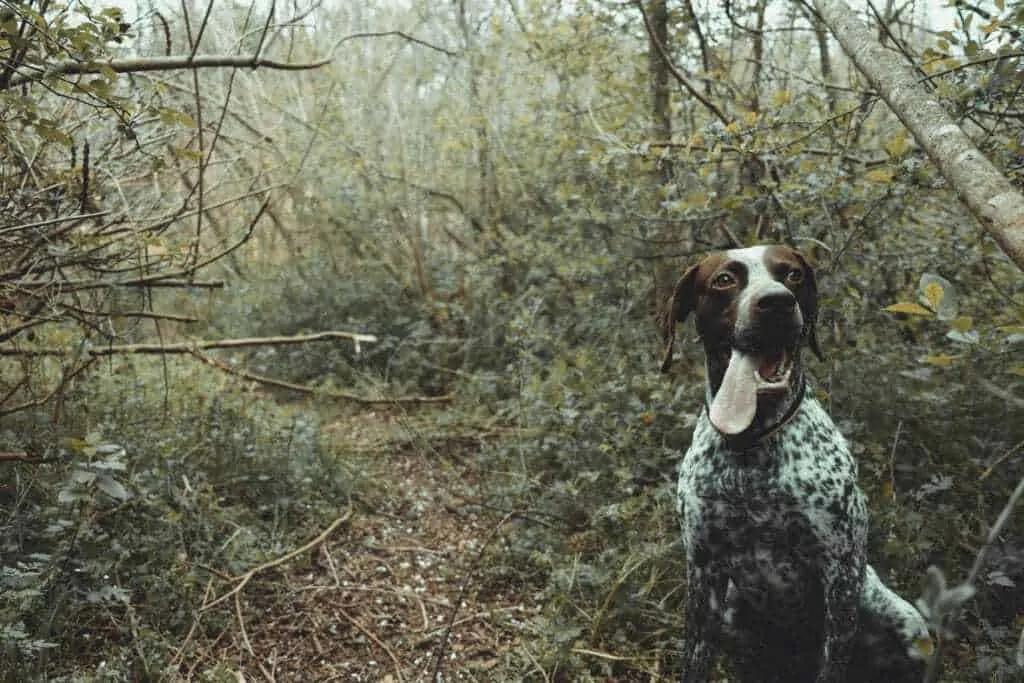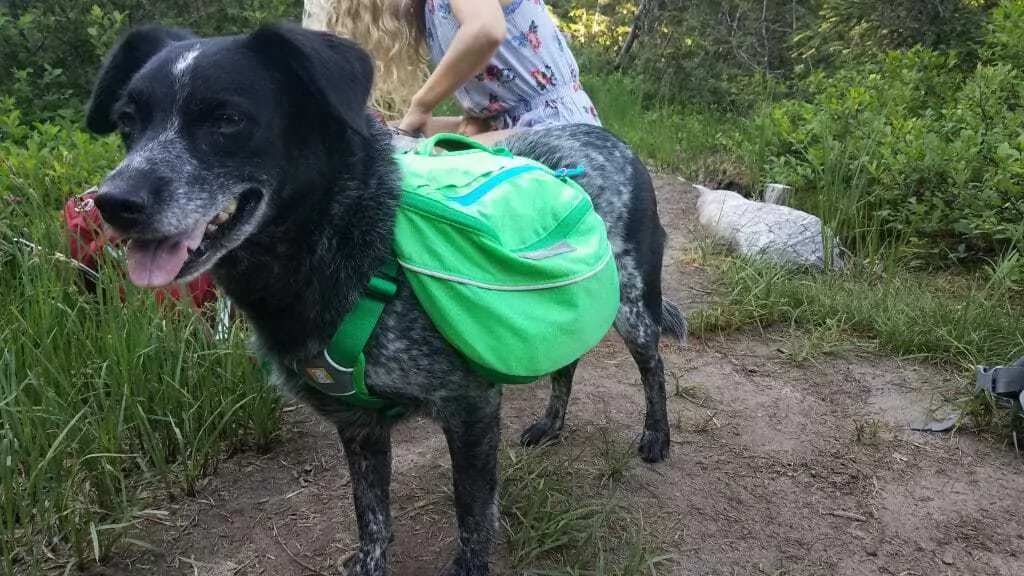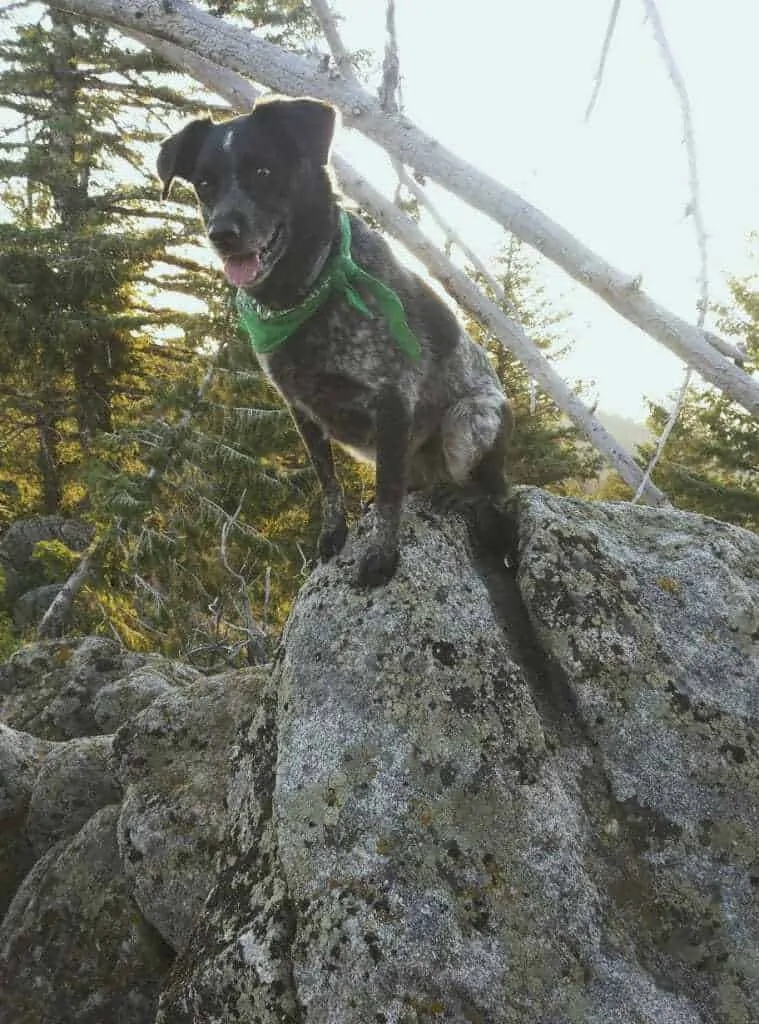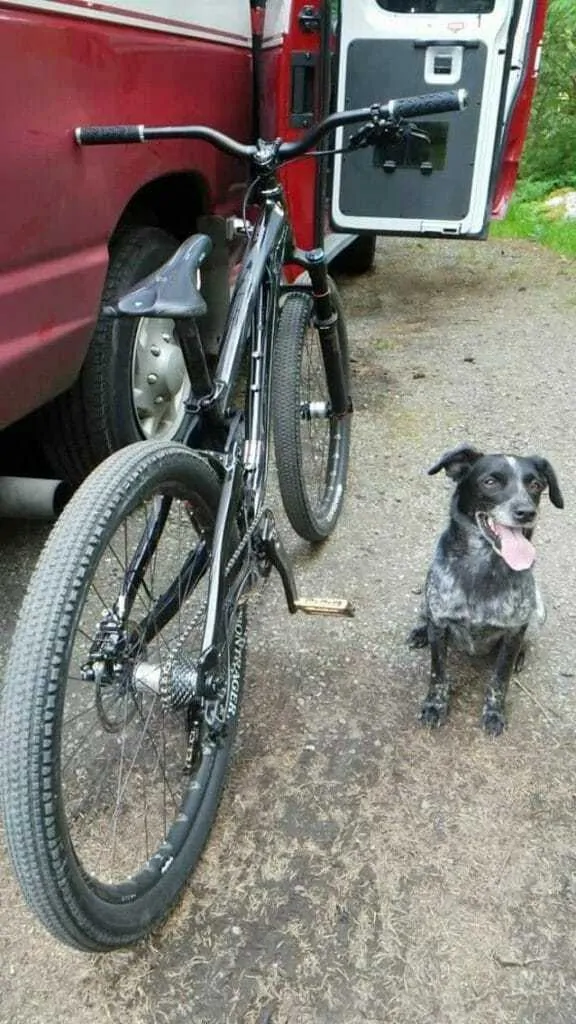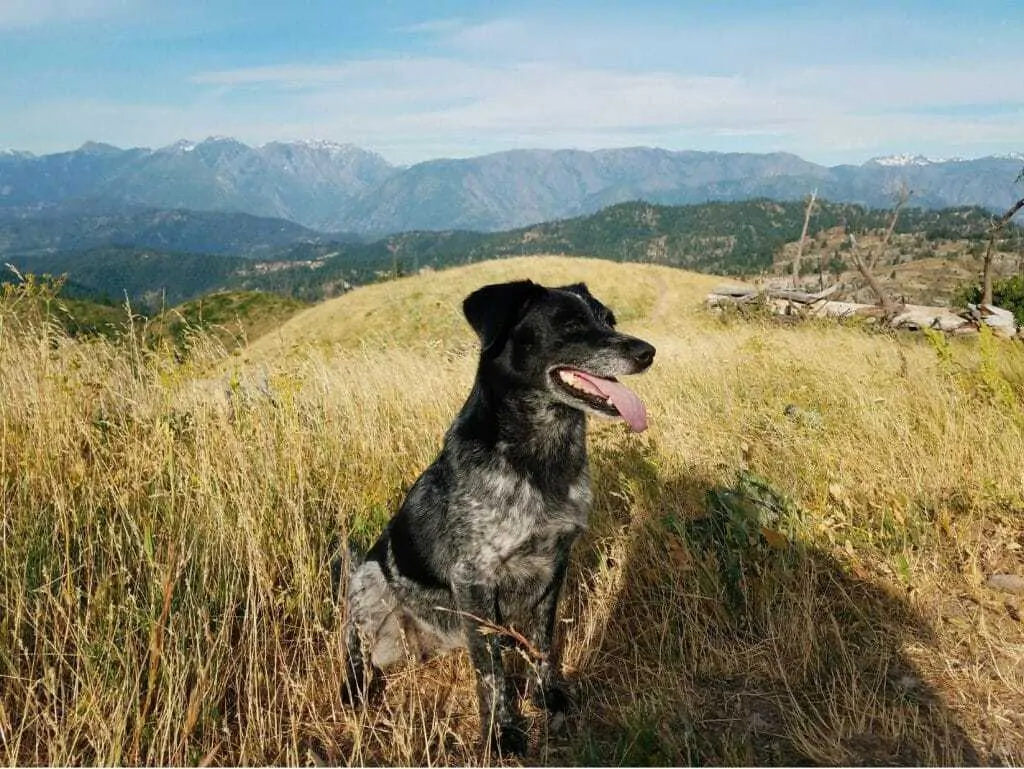Picking a dog breed can be one of the most difficult decisions when you’re planning on adopting a new furry friend. There are so many factors to consider, from temperament to size and even functionality. Whether you’re looking for a family pet or a great working dog, a Blue Heeler Pointer mix could be the perfect dog for you.
We will discuss some important facts about the Blue Heeler Pointer mix that you should consider before adopting one of these incredible dogs, as well as some history of the breeds. This information is based on fact-based research, as well as personal experiences I’ve had with my own Blue Heeler Pointer mix, Sable. Let’s get started!
Contents
History of the Blue Heeler
The Blue Heeler, otherwise known as the Australian Cattle Dog or the Queensland Heeler, is an incredibly capable and loving dog with a very unique history. Bred for Australian cattle farmers in the 19th century, these working dogs were a product of a lot of trial and error.
Cattle farmers had originally brought dogs over from England and found that the dogs just weren’t equipped for the harsh conditions found in the Outback. Breeders got to work creating a dog that would be capable of withstanding heat as well as dealing bravely with large animals, and could do so silently.
The result was a cross between different types of Collies, wild Dingoes, and even a little Dalmatian. And yes, you read that right, wild Dingoes.
These amazing creatures quickly took the world by storm, as they had really become the kind of herding dog that farmers needed.
You may have also heard of another Heeler, referred to as the Red Heeler. While they go by a different name, they are actually the exact same breed. The only difference between these two is their coat– the Red Heeler has a golden and brown coat, while the Blue Heeler is most commonly found with a blue-ticked coat.
The Red Heeler more boldly resembles the native dingo heritage through its coloring, while the blue occasionally lets through golden tuffs around the legs, neck, and jaw.
History of the German Shorthaired Pointer
While there are numerous different types of pointers in the world, we will be focusing on the German Shorthaired Pointer, one of the most common breeds. German Shorthaired Pointers, commonly abbreviated to GSPs, are incredibly brilliant gun dogs with a loving and playful spirit.
These dogs were bred in the late 19th century to be a multi-purpose hunting dog suitable for multiple roles. These dogs are not only incredible at pointing, but they are great retrievers, and great companions in out in the field.
Their assumed predecessor was the German Pointer, also known as the German Bird Dog, which was a mix between the Spanish Pointer and Bloodhounds. While the true origins of the GSP are a bit uncertain, many believe that they were a mix of these German Bird Dogs and a few other kinds of pointers.
Even after creating this baseline breed of incredible hunters, breeders weren’t fully satisfied. In an attempt to bring more of a kind temperament along with beautiful looks, breeders decided to add pointers from England into the mix, resulting in what we now know as the GSP.
Today, they are one of the most recognized bird dogs in the industry and are the number 10 most popular dog breed according to AKC rankings out of 190 breeds.
Now without further ado, let’s get into the 10 things you should know about the Blue Heeler Pointer mix!
1. They Typically Aren’t Suitable for Apartment Life
Unfortunately, if you are looking for a dog to stay with you in your small apartment, the Blue Heeler Pointer mix might not be for you. These dogs are working dogs and harness an incredible amount of energy that needs to be released regularly.
Both breeds are very exercise oriented, and they get bored and anxious in stagnant and cramped environments. However, apartment life is not undoable for these dogs. If you are the kind of person who gets outside very regularly and you have the time and energy to take them to a local park every day to get some of that energy out it is certainly a possibility.
It also just depends on the dog. While it is uncommon for these types of dogs to sit still for very long, some will be able to handle it. Our dog Sable, for instance, doesn’t necessarily like being inside all day, but she doesn’t have a hard time doing so. My Husband and I get outside more than enough, though, to keep her feeling fulfilled even on days when she is stuck inside.
A house with a large fenced yard is much more suitable for the Blue Heeler Pointer mix, as they have plenty of space to run themselves to sleep.
2. They Are Very Easy to Train
Blue Heeler Pointer mixes are incredibly adept to training, with this trait being strong on both sides of the breed. They are very well-tempered, and while full of energy, are surprisingly good at keeping focus. This comes from the Blue Heeler’s herding background and the GSP’s hunting background. Both breeds, especially the GSP, are extremely eager to please.
When we first got Sable, she was already a year and a half old. We were worried that we would have a difficult time implementing our rules and training into her routine but found absolutely no issue. We’ve had her trained off-leash since day one and have never needed to retreat (except for when the law requires, in which case she is wonderful on-leash as well).
These dogs are very attentive to you as their owner and have a lot of faith in you. It goes without saying that if you build a mutually trustworthy relationship with your Blue Heeler Pointer mix, they will do just about anything you ask.
Sable doesn’t like to play fetch, but she does loves to do parkour! We’ve trained her to jump up on to tall stumps, boulders, and logs as a real-world agility routine. She trusts that we aren’t going to put her in harm’s way and loves the athleticism. Her dedication to please fuels her, and within a month of working with her, she would jump up on nearly anything with the simple snap and point, on and off the trail.
3. They Are Great Working/Hunting Dogs
If you are a cattle farmer or a hunter looking for the perfect companion, the Blue Heeler Pointer mix just might be right.
These dogs were bred to work on both sides of the breed. Heelers are extremely capable canines, able to quickly and silently round up large cattle without a shed of fear; while GSPs are talented in all realms of hunting, especially as bird dogs.
When you bring these two breeds together, you get a pretty astonishingly competent working dog. While we don’t use Sable for hunting or work, we can definitely see that the instinct is ingrained in her. She finds a duty of herding around other animals and people, and will halt and point at rabbits and birds in the park.
Their abilities, combined with their ability to be trained, makes them one of the most competent dogs for working or hunting you could find.
4. They Are Some of the Most Loving and Loyal Dogs
Don’t be fooled by their ability to work, they are not a cut-and-dry breed. From my experience, the Blue Heeler Pointer mix is one of the most sincere and caring dogs that exist. Both breeds are known for being super close with their owners, especially GSPs.
Sable displays a fair share of this trait. She will taken it upon herself to perform search and rescue missions– penetrating deep into forests away from camp pinpointing our location and bounding blindly into rivers in futile attempts to rescue us from innocuous activities.
Smart enough to know the dangers of the world, and distressed by her disunion from us, she will do whatever it takes to keep us out of harm’s way.
This loyalty stems from a sincere trust that she has instilled in us, her owners. Though a very capable forager, she knows that her masters are her lifeline, and that it is her God given duty to keep us alive, for the sake of both us and her.
Such a loving, loyal trait is also found after a hard days play, when she is found fast asleep on your lap. A tired Blue Heeler Pointer wants nothing else than the love and and approval of their hard work and will gaze at you in admiration for simply being their owner.
Though this pure fascination with you the owner is great, it can lead some of this breed to suffer from separation anxiety. This is truly a breed that requires a balanced life that incorporates them in nearly every aspect of the day.
5. They Might Not be Suitable Around Small Children
One potentially negative side to these breeds is their difficulty dealing with very small children. While this won’t be the case for all Blue Heeler Pointer mixes, it is definitely a possibility because of the parent breeds.
This is especially true for Blue Heelers. While friendly and loving by nature, they are also herders by nature. They have been known to nip at the ankles of rambunctious children as well as the free roaming baby.
GSP’s are more friendly around children, but definitely can be a bit overbearing around toddlers. Each mix will be a little different, but it’s important to take this information into consideration before adopting a Blue Heeler Pointer mix.
They certainly have the potential to be great family dogs, though. When we first brought Sable home, our cat had just given birth to a litter of kittens and she was remarkably gentle with them. It’s not in her personality to harm other animals– she won’t even kill the bugs that she tries to catch. In Sable’s case, she has no issue around children as long as she is given some space when she seeks it.
If you have small children at home, you shouldn’t necessarily discard the idea of a Blue Heeler Pointer mix. Just make sure you do your due diligence. When adopting, try to meet both of the parents and gauge their temperament. Also, remember that if you raise your pup around the young children, they will be far less likely to show any irritation or aggression towards children in the future.
6. They Love to be Outside With You
If you are someone who enjoys the great outdoors, you might get along great with a Blue Heeler Pointer mix. These dogs, as mentioned before, have a ton of energy and love to use it outside! Anything from camping, hiking, swimming, running, riding bikes, you name it. If it’s an outdoor activity, your Blue Heeler Pointer mix will have a great time.
They make great companions for outdoor adventures, too, due to their loyalty, witts, and physical capabilities.
Whether you are looking for a dog that you can take up a mountain in the snow, or a companion for your canoeing adventures, Blue Heeler Pointer mixes may just be the perfect match for you.
Sable demonstrates this trait to the fullest, as she is the ultimate adventure dog. We’ve summited mountains with her, trekked through the desert, and even brought her down the ski slopes.
Her favorite activity by far, though, is following us down trails at what seems like hyper-speed to passer-byes on our mountain bikes. She even likes to hit the jumps!
7. They Are Generally Healthy Dogs
Like most dogs, the Blue Heeler Pointer mix is predisposed to certain medical conditions, but they are most often pretty healthy dogs. This of course partially falls on the responsibility of the owner, as it can be affected by the type of diet and amount of exercise.
While there is no specific set of health conditions for the Blue Heeler Pointer, we can look towards the parent breeds to get a bit of an idea. As far as health conditions go, the Blue Heeler is pretty safe, though there are a few things to look for as they age: Hip Dysplasia, deafness, and loss of sight. For the GSP, the list is a bit longer containing things like Bloat or Torsion, Hip Dysplasia, Cancer, and Lymphedema.
Keep in mind, just because you see a condition on these list doesn’t mean that your Blue Heeler Pointer mix is bound to have them. It only means that they may be predisposed for one or more of these complications. Luckily, most of the conditions on this list are not life-threatening and can be corrected with proper medical attention, and proactively handled with exercise and a proper healthy conscious diet.
Because of their relative healthiness, you can expect a lifespan between 11 and 15 years. This comes from the average lifespan of the Blue Heeler being 10 to 13 years and the lifespan of the GSP being between 12 and 15 years.
Sable so far has had no health complications whatsoever, though she is only 5 years old. The only time she’s had to go to the vet was for minor paw injuries. The picture above is her with her cone on to keep her from licking her stitches.
8. They Are Very Protective
The Blue Heeler Pointer mix is the kind of dog that wants to keep you safe and will do so through various means. Though doing so out of love and sincere care for their duties and affection towards their owner, the Blue Heeler Pointer will occasionally be off-put by the arrival of strangers.
This disruption can be seen in an almost timid behavior to boisterous activity. You see, it is in both the Blue Heeler and the GSP’s nature to be concerned about their work. And you are their constant work. It is not uncommon for this breed to be found nipping the ankles of newcomers to your home, and even babies left to crawl and roam. This behavior can be misrecognized as aggressive.
This characteristic can be a bit troublesome for the owner. However, you can often correct the problem by getting your dog out and letting it exercise its instinctual purpose. On the bright side, this trait allows for the possibility of becoming a great guard dog for those looking for a family protector. They are unlikely to be aggressive towards humans, though (aside from the nipping).
9. They Don’t Like to be Left Alone
One thing you should really know before you adopt a Blue Heeler Pointer mix is their distaste for being alone. This can result in a number of things depending on your particular situation, one of those being a dog that will get into things they aren’t supposed to.
This trait comes predominantly from the GSP side of the breed, as they are notorious for chewing things up or getting into things they shouldn’t. They also can become very good escape artists, and considering their great ability to jump, may try and jump the fence in an attempt to try and find you.Blue Heelers don’t necessarily have the same issue, though some have been reported to howl or whine when their owners leave.
Sable definitely doesn’t like to be left alone, but she handles it pretty well. Sometimes she will whine for a minute or two in a futile effort to call us back to her, but she gets the idea that it’s useless pretty quickly. She has gotten into the trash a small handful of times over the years but it is very rare. For the most part, she just tries to lay down and sleep until we come back.
A good tip to keep in mind if you do adopt a Blue Heeler Pointer mix with a bit of separation anxiety is to leave them in a space with little to get into and something to keep them busy. Also, leaving them outside with some toys and space to run around is a great option, as long as you have a tall fence!
10. They Might Try and Herd Things They Shouldn’t
One thing to consider when you are looking for a Blue Heeler Pointer mix is that they have an ingrained instinct to herd, and they might try and herd things they shouldn’t… like children and adults and your other house pets.
By herding, I mean circling around in an attempt to direct you, or nipping at the ankles of people who are being loud, rowdy, or appear ‘out of line.’ This clearly comes from the Blue Heeler side of the breed, as GSPs don’t have any instinct to herd or nip.
This can be avoided or reduced by proper training and making sure to pick from a set of parents with proper temperament. Not all Blue Heeler Pointer mixes will have this issue.
Sable has been known to nip in your direction from time to time when she thinks you are doing something dangerous or that will put her owners in harm’s way. She won’t bite, but you will hear her nip and it should be taken as a warning to be more careful.
The Perfect Dog for You?
All in all, the Blue Heeler Pointer mix is a very incredible, loving, energetic, and adventurous dog. Whether or not they are the right dog for you depends on a number of things, but should definitely at least be a contender. I know for my Husband and I, we couldn’t have been blessed with a better dog for us, she truly is the perfect dog in our opinions.
If you are a homebody that lives in an apartment in the city without much contact with nature and the outdoors, a family with many small rambunctious children or someone who doesn’t have a lot of time to spend with a dog, the Blue Heeler Pointer mix might not be right for you.
If you are an outdoor enthusiast, athlete, hunter, farmer, or someone with a lot of time to spend loving and working with a dog, then the Blue Heeler Pointer mix might just be the dog you’ve been searching for. It all depends on you and your unique circumstance, and with this knowledge, you should be able to make a more educated decision on the matter.
The Blue Heeler Pointer mix is truly one of a kind, and if you don’t ever own one for yourself, I hope that you at least get to meet one in your lifetime. Cheers!

Jen Jones is a professional dog trainer and behavior specialist with more than 25 years of experience. As the founder of ‘Your Dog Advisor’ and the ‘Canine Connection’ rehabilitation center, she applies a holistic, empathetic approach, aiming to address root causes rather than merely treating symptoms.
Well known for her intuitive and compassionate approach, Jen adopts scientifically-proven, reward-based methods, encouraging positive reinforcement over punishment. Jen specializes in obedience training, behavior modification, and puppy socialization. Her innovative methods, particularly in addressing anxiety and aggression issues, have been widely recognized. Jen has worked with many of the world’s leading dog behaviorists and in her free time volunteers with local animal shelters and rescue groups.


